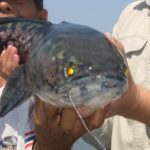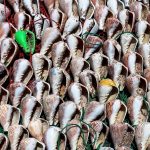Traditional fishing at Inle Lake is endemic and specific to this local environment. Inle Lake is the second largest lake in Myanmar, approximately 50 square miles (abt. 116 km2). During the dry season, the average water depth is only 7 feet (2.1 m). During the rainy season, the average depth increases to 12 feet (3,6 m). It is, therefore, a large and shallow lake. Aquatic floating plants cover large lake areas; the water is warm, clear, and slightly alkaline. These conditions support a rich fauna within and outside its waters.
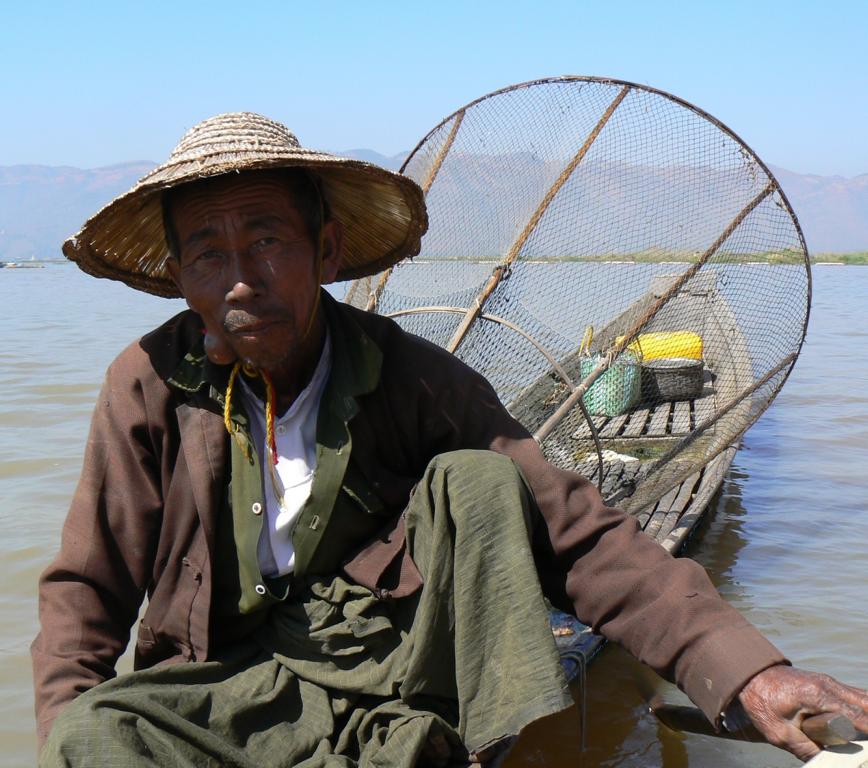
Fish species caught at Inle Lake.
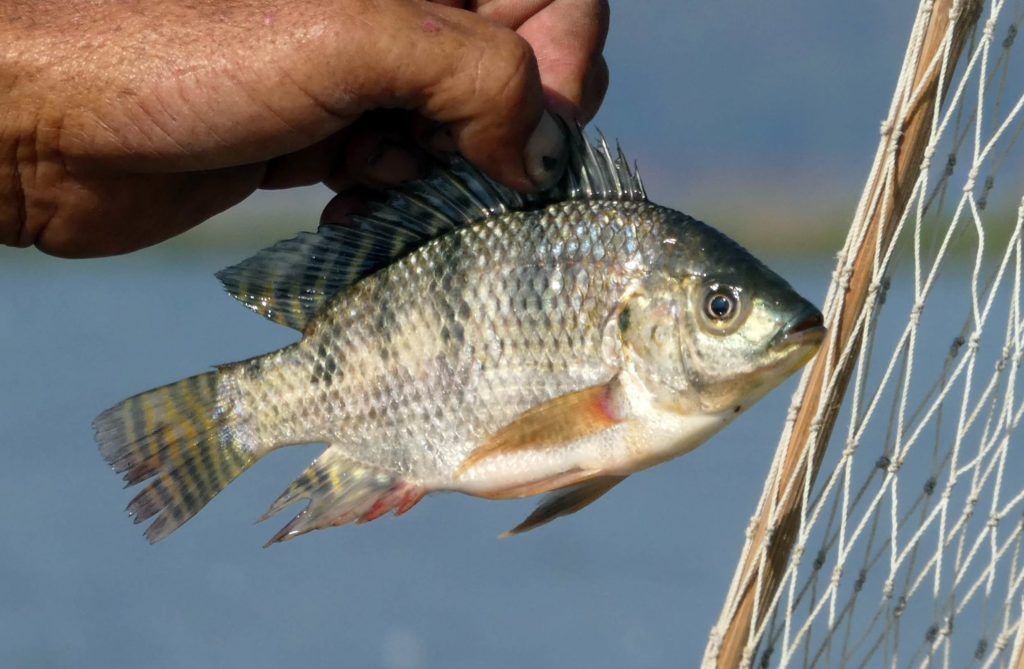
Research by Kyushu University found 49 fish species in the lake system, of which 13 were endemic, and 17 were non-native. These figures differ amongst different studies, but they all show many endemic species. Most endemic fish are cyprinids, the most famous being the Inle Carp (Cyprinus carpio intha). Many of these endemic fish are essential for the aquarium trade. Most fish caught for human consumption, however, are introduced tilapia species.
Intha community
‘Intha’ means in the local language ‘sons of the lake.’ They are an ethnic minority in Shan State province and represent a majority of 70% in the northern parts of the lake. About 100.000 Inthas live in stilt houses within floating villages on the lake. They developed a unique leg-rowing style for males and the specific conditions for fishing on Inle Lake.
Traditional rowing technique of Intha fishermen
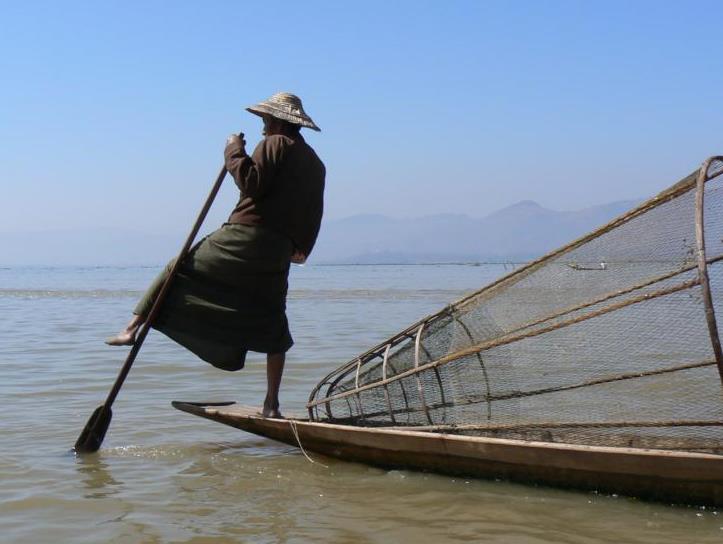
Characteristics of Inle Lake are its large size (about. 11 miles / 18 km long), shallow depths, few and low waves, many aquatic plants, and clear water. It is, therefore, possible to use long and flat canoes with low side walls and flat sterns. They are usually made from teak wood at Nampan village and caulked with lacquer from Melanorrhea usitata resin. Traditionally, one man rowed these canoes for short distances leg-rowing style and for longer distances by paddling. Women will never do leg-rowing but sit at the stern with crossed legs and paddle. Nowadays, a small outboard motor is often used to cover longer distances.
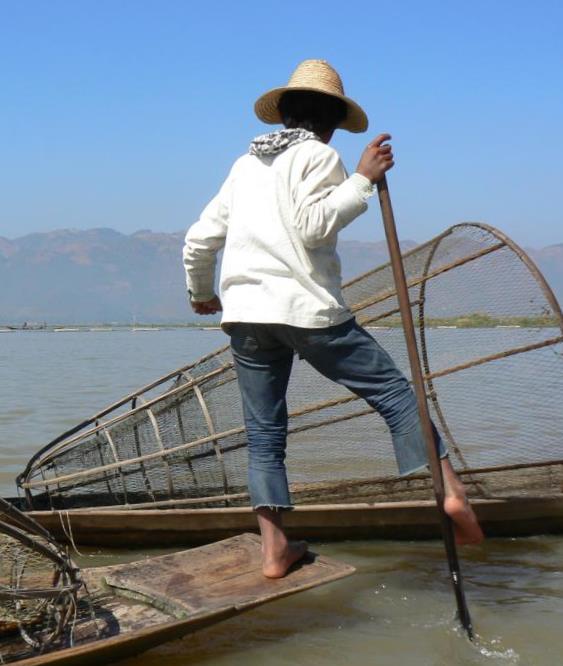
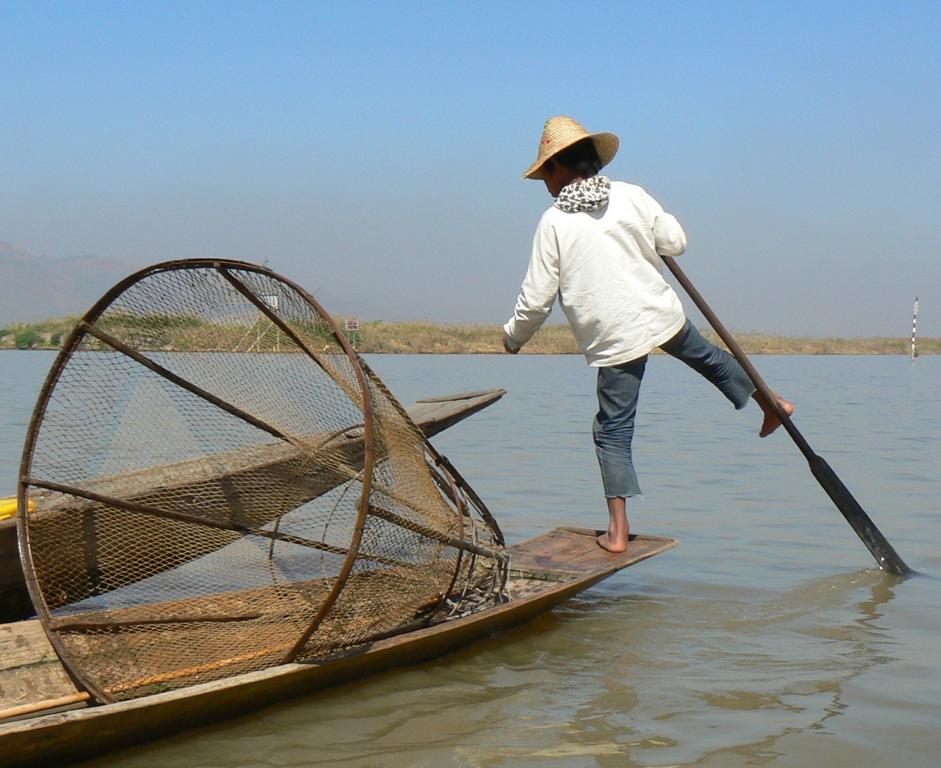
Leg-rowing was developed due to the following reasons:
- A sitting person in a low boat will be poorly seeing fish from this very flat angle
- Restricted visibility from this low position for maneuvering through aquatic plants
- As the fisherman was alone in the boat, he had to position the boat and handle the fishing gear simultaneously.
Intha fishermen row the boat by standing on one leg on the boat’s end and wrapping the other around the oar. Through half-circular movements with the rowing leg and positioning the oar with one hand, they are fast and precisely propelled through the water. The other hand is free for handling fishing gear. As the water surface is very often smooth, the lake very shallow, and they have experience from a young age, this seemingly risky positioning and movement are not dangerous in daily performance.
Net-basket fishing technique at Inle Lake
Traditionally, a net basket, called ‘Saung’ in the Intha language, was used for catching fish. Nowadays, however, Saung-fishing is often replaced by fishing with drift gillnets. As Saungs are iconic for fishing at Inle Lake, they are mainly used for tourist demonstrations.
Catching principal of a net-basket
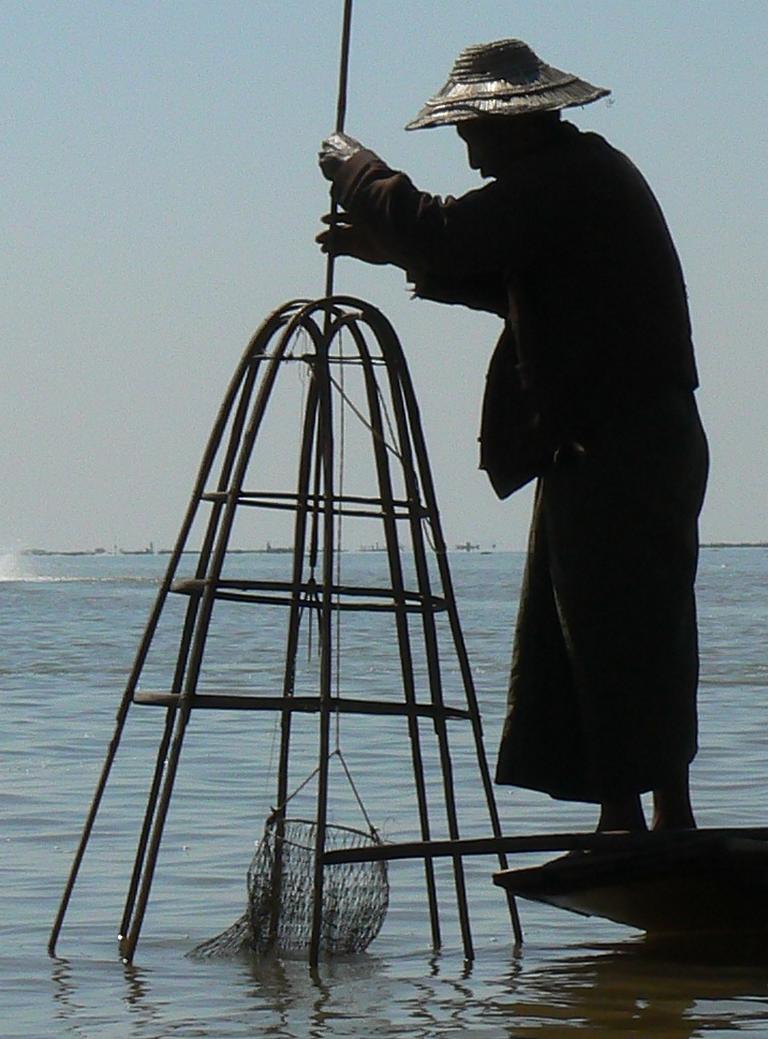
A Saung is a combination of two fishing techniques. It is an over-dimensional plunge basket with the integrated functions of a cast net. The plunge basket was stripped down to a light bamboo structure and increased to a vertical length of about 2,5 m / 8 feet. Inside this basket, a cast net was fitted, which is fixed by a rope to the conical end of the basket and thus kept open. This cast net has the same netting pockets as a regular cast net on its lower end. Only the weighing line was replaced by permanently binding the net to the large bottom rim of the plunge basket. Despite its large size, this structure is still light and manageable by one hand of an able-bodied fisherman.
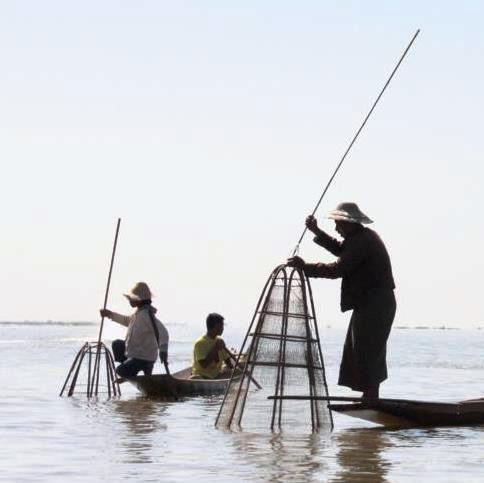
Fishing technique with a net-basket
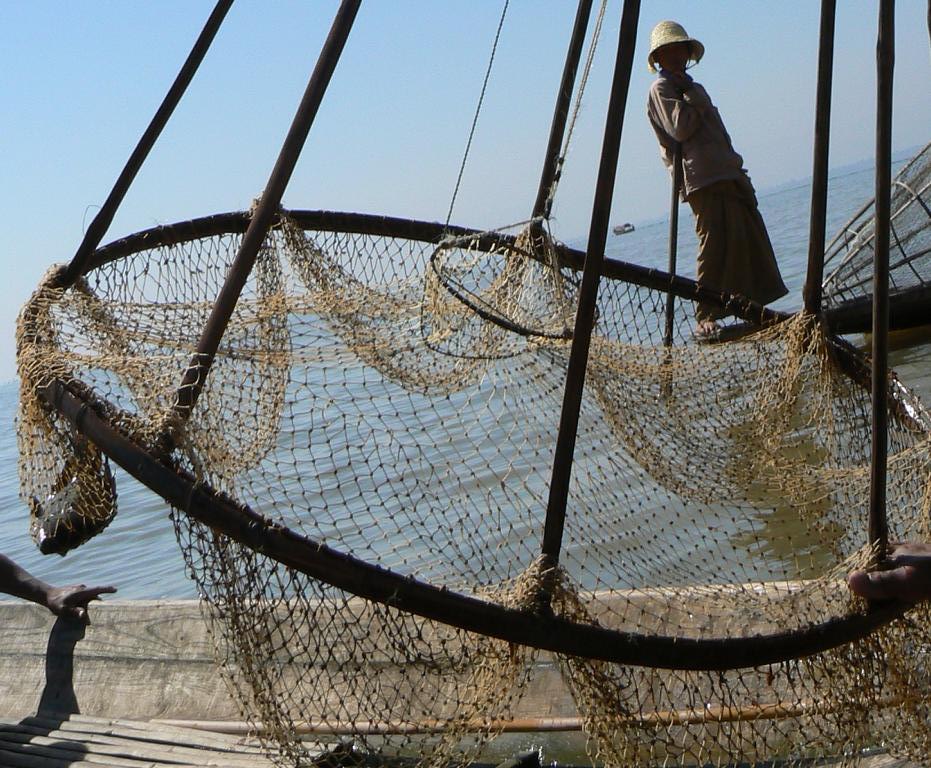
The fisherman is leg-rowing until he either sees a fish directly or the fish’s characteristic air bubbles on the water surface indirectly. Every fish species produces its bubble signature, which is determined by bubble size and frequency. He then plunges the Saung on top of the sighting or indication. After that, he loosens the knotted rope on the Saung top end, and the net falls on the possible catch. Simultaneously, the Saung must be pressed into the lake bottom mud to prevent losing the catch. The disadvantage of a Saung is the inflexible bottom rim, unlike the flexible lead chain of a cast net. When plunging the Saung, fish will try to find possible escape routes under the bamboo rim to get outside the net.
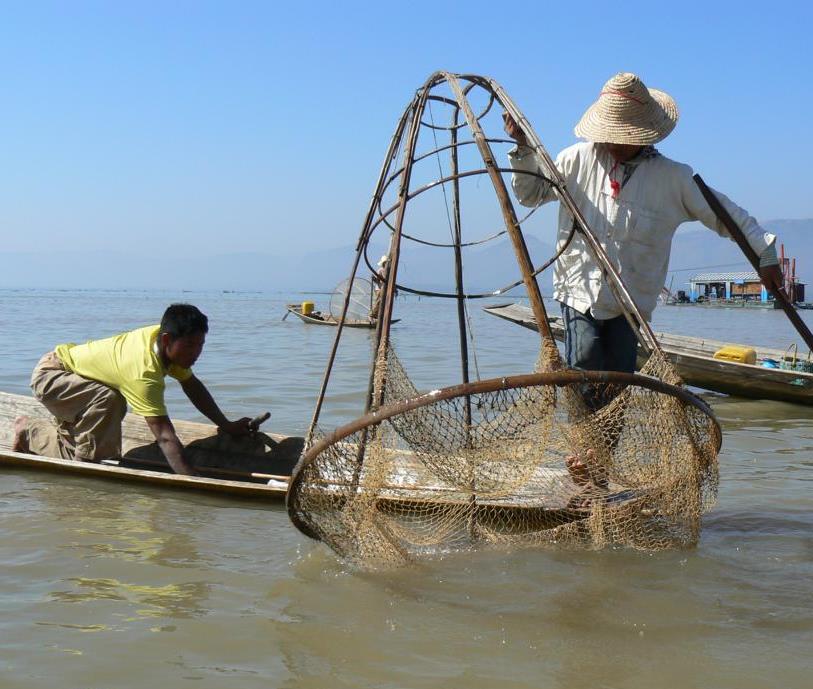

After the net falls on top of the catch, the fisherman sticks a long fish spear through the upper opening ring of the net. Fully inserted, he stirs up the muddy lake bottom with the three-pronged spearhead without barbs. Because of the commotion, fish flee sideward and into the net pockets, where they get stuck. After feeling the fish’s movement within the net, the bamboo frame is lifted from the water, and the catch is harvested.
Lessons learned about net-basket fishing at Inle Lake:
- As Inle Lake covers a vast area and is shallow and calm on the surface, a specific type of plunge basket can be used for regular fishing.
- Combined with a cast net, this over-dimensional plunge basket is locally called ‘Saung’.
- The main catches are tilapia- (cichlids) and carp species (cyprinids).
- Traditional net-basket fishing at Inle Lake was replaced mainly by gill netting.
.




